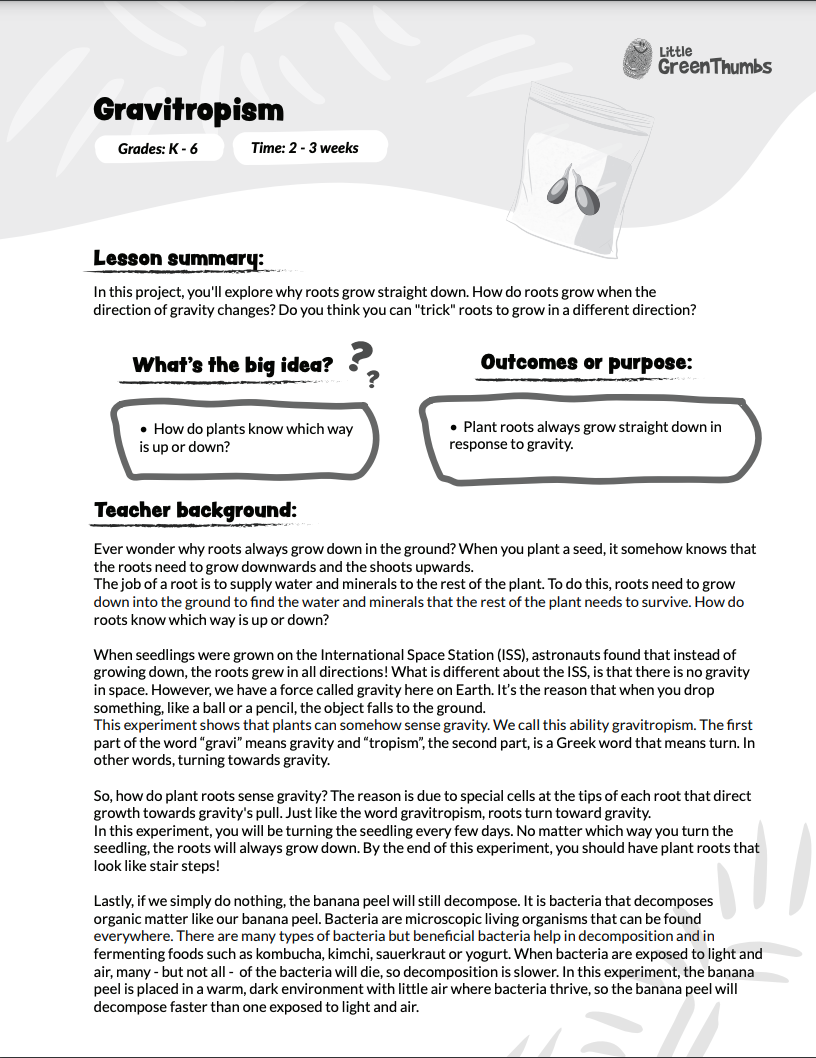Experiment:Gravitropism
Grades: K – 6
In this project, you’ll explore why roots grow straight down. How do roots grow when the direction of gravity changes? Do you think you can “trick” roots to grow in a different direction?
Time: 2-3 weeks
Ever wonder why roots always grow down in the ground? When you plant a seed, it somehow knows that the roots need to grow downwards and the shoots upwards. The job of a root is to supply water and minerals to the rest of the plant. To do this, roots need to grow down into the ground to find the water and minerals that the rest of the plant needs to survive. How do roots know which way is up or down?
When seedlings were grown on the International Space Station (ISS), astronauts found that instead of growing down, the roots grew in all directions! What is different about the ISS, is that there is no gravity in space. However, we have a force called gravity here on Earth. It’s the reason that when you drop something, like a ball or a pencil, the object falls to the ground. This experiment shows that plants can somehow sense gravity. We call this ability gravitropism. The first part of the word “gravi” means gravity and “tropism”, the second part, is a Greek word that means turn. In other words, turning towards gravity.
So, how do plant roots sense gravity? The reason is due to special cells at the tips of each root that direct growth towards gravity’s pull. Just like the word gravitropism, roots turn toward gravity. In this experiment, you will be turning the seedling every few days. No matter which way you turn the seedling, the roots will always grow down. By the end of this experiment, you should have plant roots that look like stair steps!
Lastly, if we simply do nothing, the banana peel will still decompose. It is bacteria that decomposes organic matter like our banana peel. Bacteria are microscopic living organisms that can be found everywhere. There are many types of bacteria but beneficial bacteria help in decomposition and in fermenting foods such as kombucha, kimchi, sauerkraut or yogurt. When bacteria are exposed to light and air, many – but not all – of the bacteria will die, so decomposition is slower. In this experiment, the banana peel is placed in a warm, dark environment with little air where bacteria thrive, so the banana peel will decompose faster than one exposed to light and air.
Materials:
- Plastic CD jewel cases
- Plasticine
Or
- Plastic Ziplock sandwich bags
Stapler
Thumb tacks or tape
Fast growing seeds (radish, cherry tomato seeds, basil)
Paper Towels
Scissors
Spray bottle with water
Notebook

